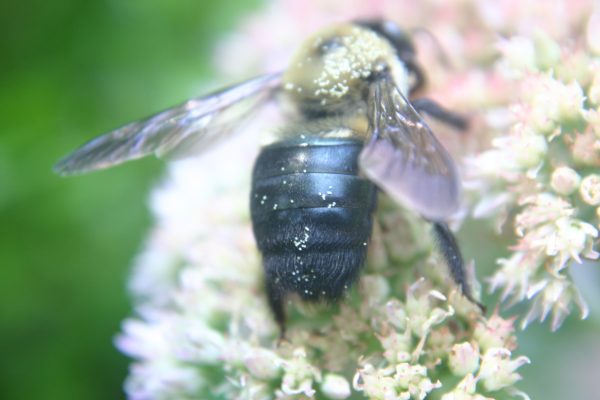Bats – Attracting
Q: I received a bat house for Christmas (yes, I asked for one). Can you tell me some tips to make it successful or direct me to some information on making my bat house attractive to bats? I live in a subdivision on a 1/2 acre lot.
A: I have mixed feelings about attracting bats to your home. On one hand, they, like any other wild animal, should be allowed to live and go about their business as long as they don’t interfere with human activities. Most of the scary tales about them are myths and should be ignored. On the other hand, bats make a mess in attics and on the siding of houses and I support their removal (at the proper time of year) in these cases. Bats are certainly beneficial, eating lots of insect pests each night. Their effect on mosquito populations, though, is negligible when you consider how many mosquitoes and how few bats are around in summer.
There is a great deal of debate about the risk, if any, that bats pose when in close proximity to humans. They are certainly less likely to transmit rabies than raccoons or foxes. Even so, why increase the chance of disease or the smelly mess of bats in unwanted places if you don’t have to? I usually don’t advise attracting bats to your property UNLESS you have a large acreage and can keep the box far from your house.
If you’d still like to have bats, remember that attracting them to a bat house is usually difficult. The best sites are near a body of water, because more insects are available there. Open fields are good, for the same reason. Bright lights attract insects at night and a good location for a bat house is near a street light or pole-mounted security light.
In addition to nearby food, bats require a house whose temperature does not fluctuate greatly during the day. Mounting the bat house on a barn or large shed is a good spot but putting it on a pole or tree is usually unsuccessful. The house should be at least two feet tall and fourteen inches or more wide to be an inviting residence.
The best information source is Bat Conservation International. Their efforts have led to world-wide attention to bat habitat conservation.
Bats are very beneficial to the environment. Each night, an adult bat may consume 3000 mosquitoes or other pest insects. Bats are the subject of several myths. In fact, bats do not attack people, they do not get tangled in women’s hair and they are no more likely to have rabies than other wild animals. More people are killed each year by dogs than have been killed by rabid bats in the last 30 years. Many people are now bat conservationists, who protect bat habitat and who build bat houses.
Even though bats are beneficial, their droppings can be a nuisance. They can smear down a house wall under an attic vent where bats are roosting. The droppings can build up in a pile inside an attic if bats are living there. Though unsightly, bat droppings are no more likely to spread histoplasmosis than bird droppings.
There are no effective repellents against bats. Moth balls and ultrasonic devices have not proven useful. When bats are detected, the best thing to do is to gradually exclude them from the roost area so they find another, more acceptable site. If bats are in an attic, it is important to know the best times to exclude them. There are generally two times each year: in early April, before the young are born and in August, when the young have learned to fly. If bats are excluded between May and July, the non-flying young may die and decompose in the attic or they may, in desperation, come into human living quarters.
To exclude bats, all openings must be sealed. Bats can squeeze through gaps as small as 1/2 inch, so a thorough sealing job is necessary. Holes can be covered with wood, sheet metal or wire mesh. Unlike squirrels, bats can not gnaw around the seal you install. The best time of day to cover holes is at night, after the bats have left to feed. Do the attic closure gradually, leaving fewer holes each time over two or three days. On the last day, when only one hole is left, cut off the end of a plastic bread bag. Staple one opening of the bag around the hole you have left so that bats can come through the wall and into the bag. They will simply slide out the other end of the bag and fly away. When they return, the bats will not be able to crawl back through the plastic bag and will search for other quarters.
If bats are roosting on the outside of a louvered attic vent, a large sheet of polyethylene plastic can be hung a few inches away from the vent so that the animals can drop down and fly away. If the bottom edge of the plastic is hung two feet below the vent, returning bats will simply hit the plastic and slide off. When no bats remain on the louvers, cover them with 1/4 inch wire mesh.
Small bat houses are often sold for hanging on trees in a backyard. These are rarely successful in attracting bats. Plans for building more suitable bat lodgings can be had from Bat Conservation International, P.O. Box 162603, Austin TX 78716.














